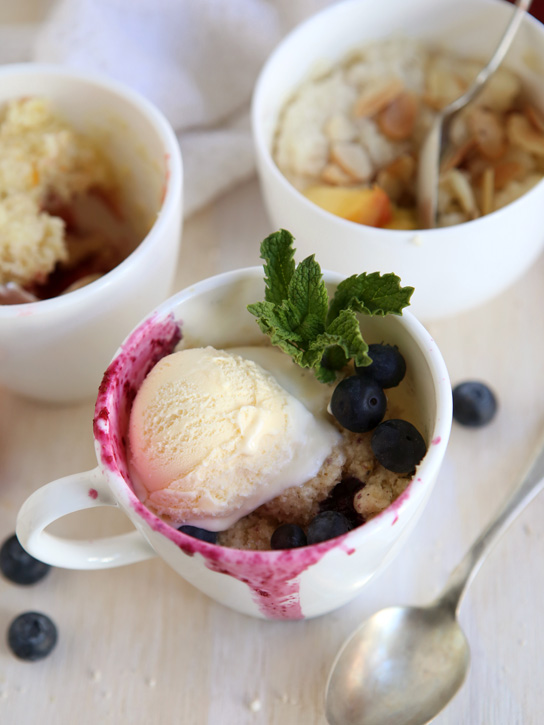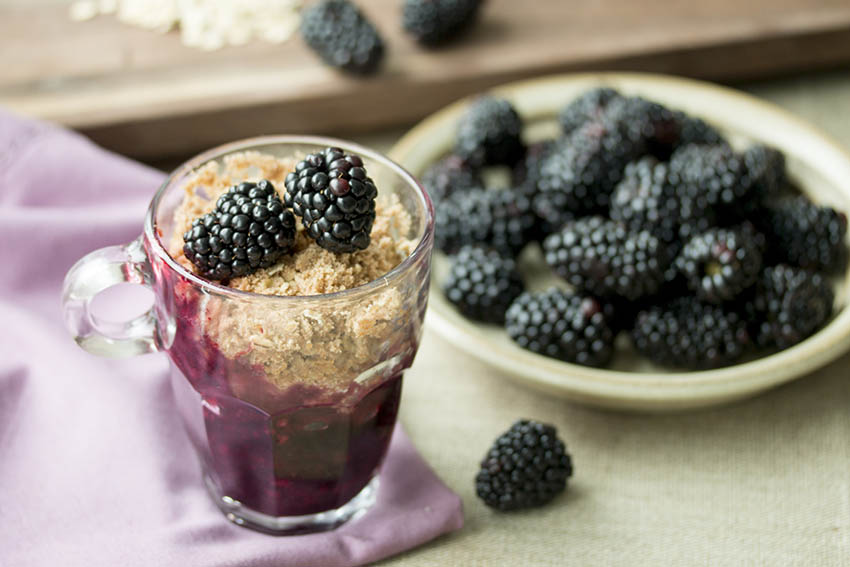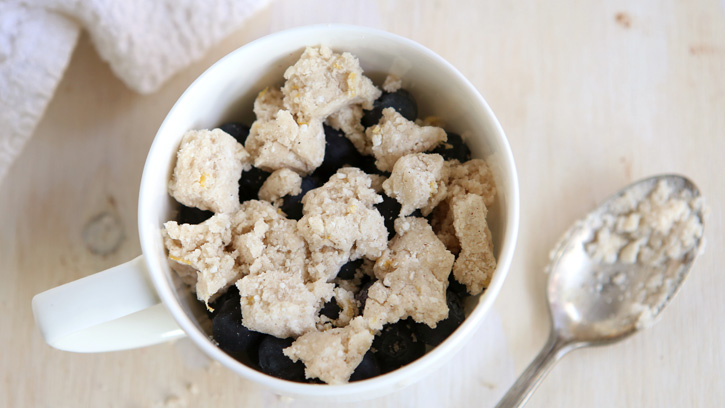Welcome to our ultimate guide on creating the perfect microwave blackberry mug cobbler! If you’re in the mood for a warm, fruity dessert that’s ready in under 5 minutes, without heating up the kitchen or dirtying multiple dishes, this single-serve treat is your new best friend. Bursting with juicy blackberries, a sweet and tender topping, and that irresistible cobbler texture, it’s an effortless way to satisfy sweet cravings, impress guests, or enjoy a cozy solo indulgence. Ideal for busy weeknights, dorm rooms, or when you want dessert without the commitment of a full batch, this mug cobbler combines convenience with homemade flavor.

In this SEO-optimized article, we’ll reveal 7 essential secrets to mastering this quick dessert. From its intriguing history to key ingredients, a foolproof step-by-step recipe, tasty variations, expert tips, storage and serving suggestions, nutritional insights, and frequently asked questions, we’ve got everything you need. We’ll include internal links to related recipes on our site, such as our classic chocolate chip cookies, peanut butter cookies, no-bake chocolate oatmeal cookies, bakery-style blueberry muffins, classic New York style cheesecake, festive gingerbread cookies, All-American apple pie, or vegan and gluten-free desserts, and external links to trusted sources for further reading. Whether you’re a microwave novice or a quick-dessert pro, this guide ensures a cobbler that’s bubbly, delicious, and mess-free every time.
Microwave mug cobblers are a modern twist on classic Southern cobblers, adapted for speed and portion control. With prep time just 2-3 minutes and “baking” in 1-3 minutes, you’ll have dessert faster than delivery. Let’s dive into the secrets and get your mug ready!
Secret 1: The Intriguing History of Microwave Mug Desserts
The microwave blackberry mug cobbler is part of a broader trend in quick, single-serve desserts that owe their existence to the invention of the microwave oven and the rise of convenience cooking. The microwave itself was discovered accidentally in 1945 by Percy Spencer, an engineer at Raytheon, who noticed a chocolate bar melting in his pocket while working on radar technology during World War II. This led to the first commercial microwave oven in 1947, initially used for industrial purposes before entering homes in the 1950s and 1960s. Early models were bulky and expensive, but by the 1970s, they became household staples, revolutionizing how people prepared food.
Mug desserts, specifically, emerged in the late 2000s as part of the “mug cake” craze. The trend is often traced to chain emails and early internet recipes around 2009-2010, where simple mixes of flour, sugar, and cocoa were microwaved in mugs for instant cakes. By 2011, blogs and YouTube channels popularized variations, including fruit-based cobblers. The appeal lay in their speed—perfect for college students, busy parents, or anyone craving dessert without baking a full batch. Companies like Duncan Hines capitalized on this in 2017 by launching mug cake mixes in flavors like apple cinnamon, which paved the way for fruit cobbler adaptations.
Cobblers themselves have deeper roots in American history, originating in the 19th century as a pioneer dish where settlers “cobbled” together fruit with biscuit dough due to limited resources. Blackberry cobbler, a Southern favorite, draws from this tradition but was miniaturized for the microwave era. The blackberry version gained popularity in food blogs around 2016, with recipes emphasizing fresh or frozen berries for year-round enjoyment. Today, mug cobblers represent the fusion of historical comfort food with modern convenience, boosted by social media platforms like TikTok and Pinterest.
For more on quick desserts, check our no-bake chocolate oatmeal cookies. Externally, Eater explores the mug cake trend’s cultural impact.
This evolution highlights how technology and creativity have made indulgent desserts accessible anytime.
Secret 2: Essential Ingredients for Microwave Blackberry Mug Cobbler
The beauty of a microwave blackberry mug cobbler lies in its simplicity, using pantry staples and fresh fruit to create a dessert that’s both effortless and flavorful. The key is balancing the juicy berries with a tender, cake-like topping that cooks evenly in the microwave. Let’s break down the essential ingredients, their roles, and tips for selection, based on popular recipes.
- Blackberries: 1/2 to 1 cup fresh or frozen. They provide the tart, juicy base; frozen work well without thawing to avoid excess water. Opt for ripe, plump berries for natural sweetness.
- Sugar: 1-2 tablespoons granulated for the fruit, plus 1-2 tablespoons in the topping. It sweetens the berries and helps create a syrupy sauce. Brown sugar adds a caramel note.
- Thickener: 1 teaspoon cornstarch or flour. This binds the berry juices, preventing a soupy texture. Arrowroot is a gluten-free alternative.
- Flour: 2-4 tablespoons all-purpose or self-rising for the topping. It forms the cakey structure; gluten-free blends work for adaptations.
- Baking Powder: 1/4-1/2 teaspoon if not using self-rising flour. It helps the topping rise and become fluffy.
- Milk: 2-4 tablespoons (dairy or plant-based). Adds moisture to the batter; almond or oat milk for vegan versions.
- Butter: 1-2 tablespoons melted. Provides richness and helps the topping brown; coconut oil for dairy-free.
- Vanilla Extract: 1/4 teaspoon optional, for flavor enhancement.
- Salt: A pinch to balance sweetness.
A standard single-serve recipe: 1/2 cup blackberries, 1 tbsp sugar, 1 tsp cornstarch for base; 1/4 cup flour, 1 tbsp sugar, 1/4 tsp baking powder, pinch salt, 1 tbsp butter, 2 tbsp milk for topping. Some add oats for a crumbly texture.
Fresh berries from local markets yield the best flavor, but frozen are convenient. For quality staples, check King Arthur Baking. These ingredients ensure a quick, customizable cobbler.
Secret 3: Step-by-Step Recipe for Microwave Blackberry Mug Cobbler
Now, let’s make it! This microwave blackberry mug cobbler recipe is single-serve, ready in under 5 minutes, and yields a warm, comforting dessert for one. Adapted from reliable sources, it’s simple and forgiving.

Prep Time: 2 minutes | Cook Time: 2-3 minutes | Total Time: 5 minutes | Yield: 1 serving
Ingredients:
- 1/2 cup fresh or frozen blackberries
- 1 tablespoon granulated sugar (for berries)
- 1 teaspoon cornstarch
- 1/4 cup all-purpose flour
- 1 tablespoon granulated sugar (for topping)
- 1/4 teaspoon baking powder
- Pinch of salt
- 2 tablespoons milk (dairy or non-dairy)
- 1 tablespoon melted butter or oil
- 1/4 teaspoon vanilla extract (optional)
Instructions:
- Prepare the Berries: In a microwave-safe mug (at least 12 oz), toss blackberries with 1 tbsp sugar and cornstarch. If using frozen, no need to thaw. Microwave for 30 seconds to 1 minute to soften and release juices, stirring halfway.
- Make the Topping Batter: In a small bowl, whisk flour, 1 tbsp sugar, baking powder, and salt. Add milk, melted butter, and vanilla; stir until just combined into a thick batter. Avoid overmixing.
- Assemble: Pour or spoon the batter over the berries in the mug, spreading gently to cover.
- Microwave: Cook on high for 1.5-3 minutes, depending on microwave wattage (start with 2 minutes). The topping should puff up, set, and no longer look wet. Edges may bubble.
- Rest and Serve: Let cool for 1-2 minutes (it will be hot!). Top with ice cream, whipped cream, or yogurt if desired.
For a visual guide, see this similar berry cobbler tutorial. Test in 30-second increments to avoid overcooking.
This recipe is adaptable—try with our vegan and gluten-free desserts for modifications.
Secret 4: Delicious Variations to Try
Keep your microwave blackberry mug cobbler exciting with these twists, inspired by creative recipes.
- Oat-Topped Crumble: Replace half the flour with quick oats for a streusel-like texture.
- Mixed Berry: Swap half blackberries for blueberries or raspberries.
- Vegan Version: Use plant-based milk and oil instead of butter.
- Cake Mix Hack: Use 2-3 tbsp yellow cake mix for the topping for extra fluffiness.
- Spiced Up: Add a pinch of cinnamon or ginger to the berries.
- Nutty Addition: Stir in chopped nuts or seeds to the topping.
- Boozy Twist: Mix in a splash of bourbon for adult flavor (microwave evaporates alcohol).
For more ideas, explore Betty Crocker’s build-your-own mug cobbler. These keep the quick essence while adding variety.
Secret 5: Pro Tips for Perfect Mug Cobbler Every Time
Elevate your cobbler with these expert tips:
- Use a large mug to prevent overflow.
- Adjust time based on microwave power (700-1100W).
- Drain excess juice if berries are watery.
- Stir berries midway for even cooking.
- Let rest to set texture.
- Experiment with toppings like yogurt for healthier options.
From bloggers, undercook slightly for gooey centers.

Secret 6: Storage and Serving Suggestions
Mug cobblers are best fresh, but store leftovers in the fridge for 1-2 days; reheat 30 seconds. Freeze unbaked mix for later.
Serve warm with ice cream, whipped cream, or nuts. Pair with coffee or as a quick breakfast treat.
Secret 7: Nutritional Information and Healthier Twists
Per serving: ~250-350 calories, 10-15g fat, 40-50g carbs (5g fiber, 25g sugar), 3-5g protein. Berries add antioxidants and vitamins.
Healthier: Reduce sugar, use whole-grain flour, add oats for fiber. Vegan swaps lower cholesterol.
Consult USDA for details—enjoy as a balanced treat!
Frequently Asked Questions
Q: Why is my cobbler rubbery?
Overcooking in the Microwave: Microwaves cook unevenly and quickly, causing the topping to overheat and develop a tough, rubbery texture. Proteins in the flour and any egg (if used) can overcoagulate when cooked too long, leading to a dense result.
- Fix: Reduce cooking time. Start with 1.5 minutes on high (for a 1000W microwave) and check in 30-second increments. The topping should look set but slightly soft in the center. It firms up as it cools.
Too Much Flour or Thickener: Excess flour or cornstarch in the topping or berry base can create a gummy texture, especially if not balanced with enough liquid or fat.
- Fix: Stick to precise measurements (e.g., 1/4 cup flour for the topping, 1 tsp cornstarch for berries). Use a measuring spoon and level off for accuracy. If the batter looks too thick, add an extra 1/2 tbsp milk.